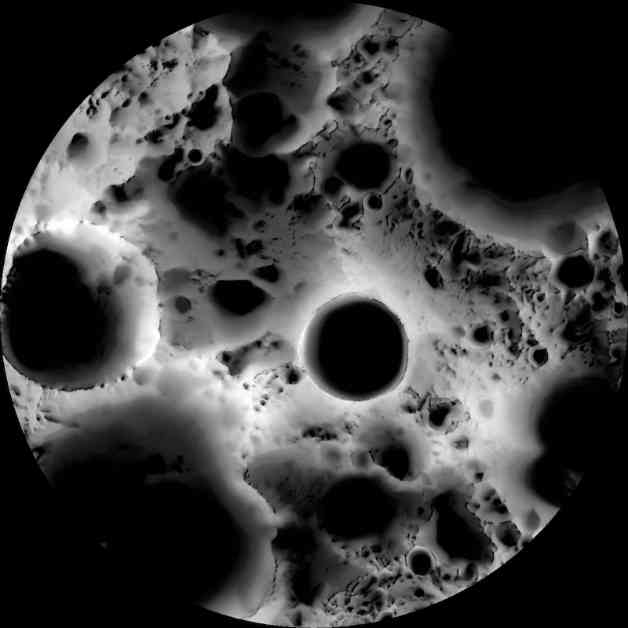Ice on the Moon: More Abundant Than Previously Thought
Moon-orbiting spacecraft have confirmed the presence of water ice near the moon’s poles in deep, shadowed craters. New data from NASA’s Lunar Reconnaissance Orbiter (LRO) now suggests that ice on the moon is even more widespread than initially believed.
The moon is an incredibly dry place with no rivers, lakes, or puddles like we have on Earth. However, water molecules are bound in the lunar soil, known as regolith, and there are ice deposits, primarily near the moon’s South Pole. This new study by NASA scientists, published in The Planetary Science Journal, shows that ice deposits are more extensive than first thought.
Lead author of the study, Timothy McClanahan at NASA’s Goddard Space Flight Center, revealed that there is evidence of water ice within permanently shadowed regions (PSRs) outside the South Pole, extending to at least 77 degrees south latitude. The ice concentrations are expected to be highest in the coldest locations below 75 Kelvin and near the base of the PSRs’ poleward-facing slopes.
The researchers used data from instruments on NASA’s Lunar Reconnaissance Orbiter to detect the ice deposits. Neutrons originating from cosmic rays collide with hydrogen atoms in the ice, allowing scientists to identify the presence of water ice on the moon.
The discovery of widespread ice on the moon is significant for future lunar explorations. Ice could serve as a crucial resource for astronauts, providing drinking water, oxygen, and even rocket fuel without the need to transport large quantities from Earth. Moreover, studying lunar ice could offer valuable insights into the early solar system and the moon’s history of impacts by comets and asteroids.
The origin of the ice on the moon is still a subject of research. It could be delivered by comet or meteor impacts, originate from the moon’s interior gas that freezes on the surface, or be produced by chemical reactions between hydrogen in the solar wind and oxygen in the lunar regolith.
The presence of ice in the permanently shadowed regions of the moon’s poles suggests that it could persist for billions of years. This offers hope for potential human settlement on the moon, where ice could be melted for various purposes, including making rocket fuel, energy, breathable air, and protection from radiation.
In conclusion, the new NASA study reveals that water ice on the moon is more abundant than previously thought, opening up possibilities for sustainable lunar exploration and potential human habitation in the future.













